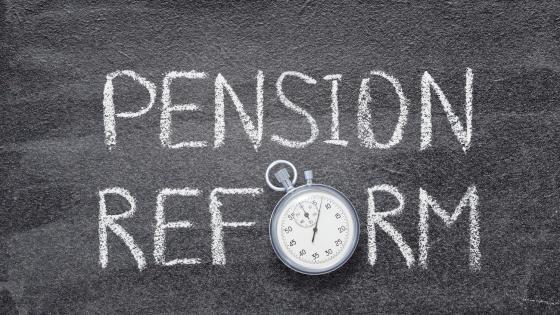The enduring demographic transition is challenging social security systems around the world, prompting a series of reforms over the last decade. This makes a number of research and policy questions a matter of urgent concern.
- Do individuals actually respond to changes in social security wealth by increasing their savings?
The body of evidence shows that the reduction in pension benefits brought out by pension reforms has indeed increased saving and private wealth accumulation, although at a rate of considerably less than one-for-one, see Feldstein (1974), Gale (1998), Bernheim (2002), Attanasio and Brugiavini (2003), and Bottazzi, Jappelli and Padula (2006).
- What happens when the increasing reliance on private wealth for retirement purposes confronts large segments of the populations with entirely new issues?
At a very basic level, whether individuals respond to the reforms very much depends on the awareness of such reforms. This leads to the question of how much individuals know about their pensions. In Bottazzi, Jappelli and Padula (2006), we document non-negligible mistakes in individuals’ expectations of retirement benefits. This implies that lack-of-information is a prominent reason for individuals failing to increase their savings when the social security wealth decreases.
But knowing pension rules might well not be enough. Transaction costs and market imperfections mean that the different wealth components are imperfect substitutes. To the extent that reforms affect not only how much people save but also the mix of assets in households’ portfolios, simply assessing the wealth effect of pension reforms might give a wrong impact of the long-term consequences of the reforms. Indeed, even if households respond to social security reforms by increasing their private wealth, it remains the question of what fraction of that wealth they can readily consume after retirement.
- Are households increasing more financial assets (which are readily available for consumption) or real assets (which can be converted in consumption at a cost)?
In new research, we investigate these questions using Italian data (Bottazzi, Jappelli and Padula 2009). Among European countries, the demographic projections show that Italy (together with Spain) will feature the highest old-age dependency ratio in 2050. This fact has spurred profound revisions of the Italian social security system. Pension reforms have reduced dramatically social security wealth for certain groups of Italian households, especially the self-employed, public employees, and workers who in 1995 had less than 15 years of contributions. The differential impact of the pension reforms can be exploited to understand how household portfolio choices are affected by pension arrangements.
To address this issue, we use the Italian Survey of Household Income and Wealth, which records detailed portfolio data and elicits expectations of retirement outcomes and spans the 1989-2006 period. The results show that real wealth responds more than financial assets to social security wealth innovations; if social security wealth decreases by one year’s income, real assets increase by 7 months and safe financial assets by 1 month’s income. Moreover, the extent of the households’ response is larger among those who are better able to estimate future pension entitlements. Finally, the propensity to purchase private pension funds and life insurance has not increased after the reform.
Four implications
This evidence has four main implications.
First, though Italian households seem to be aware of the effect of pension reforms on replacement rates and the social security wealth they will be entitled to, there is still a considerable gap between expectations and legislated values of pension benefits. Improving information about pension benefits is therefore of paramount importance.
Second, since the offset between social security wealth and private wealth is considerably less than one-for-one, even for informed households, increasing information is not sufficient to induce households to increase their private wealth.
Third, the particular asset mix of Italian households matters. Pension reforms have not diminished the propensity to invest in real estate. On the contrary, they have apparently induced additional demand for housing. Will people be able to use this additional wealth to supplement the fall in income after retirement? For example, pension reforms have reduced social security wealth of middle-aged average workers by about €45,000, a reduction that is likely to be offset by an increase in consumable private wealth of only €20,000.
This means that the response of private wealth to pension reforms is still limited, and that the adequacy of saving issue will be an important concern for future generations of retirees.
Finally, despite a decade of intense legislative efforts, a negligible fraction of the increase in private wealth has been channelled in private pension plans.
References
Attanasio, Orazio P., and Agar Brugiavini (2003), “Social Security and Households’ Saving,” Quarterly Journal of Economics 118, 1075-1119.
Bernheim, Douglas (2002), “Taxation and Saving,” in Handbook of Public Economics. Volume 3, Alan Auerbach and Martin Feldstein eds. Amsterdam: North-Holland.
Bottazzi, Renata, Tullio Jappelli and Mario Padula (2006), “Retirement Expectations, Pension Reforms, and their Effect on Private Wealth Accumulation,” Journal of Public Economics 90, 2167-2213.
Bottazzi, Renata, Tullio Jappelli and Mario Padula (2009), “The Portfolio Effects of Pension Reforms,” CEPR DP n.7380.
Feldstein, Martin (1974), “Social Security, Induced Retirement and Aggregate Capital Accumulation,” Journal of Political Economy 82, 357-74.
Feldstein, Martin, and Anthony Pellechio (1979), “Social Security and Household Accumulation: New Microeconometric Evidence,” Review of Economics and Statistics 61, 361-68.
Gale, William G. (1998), “The Effect of Pension Wealth on Household Wealth: a Reevaluation of Theory and Evidence,” Journal of Political Economy 106, 706-23.




